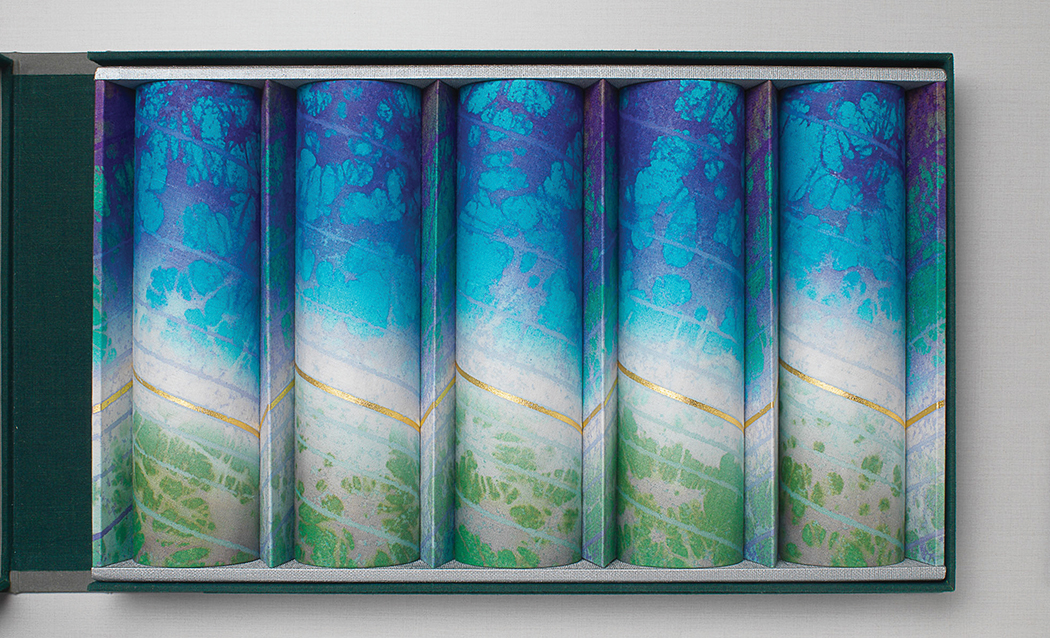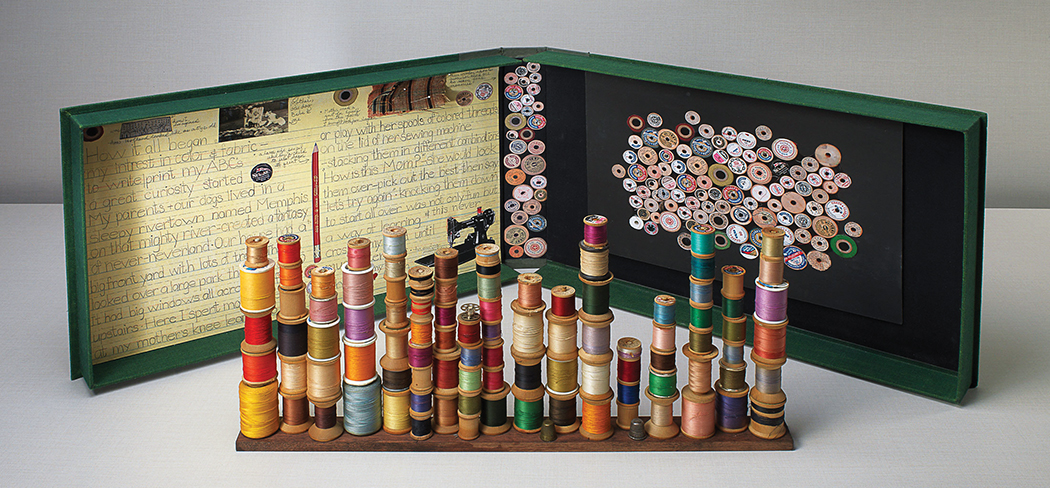By Laurie Rosenthal
Staff Writer
All photos by Bruce M. White for The Cotsen Collection, ©Lloyd Cotsen, 2016
The hi story of fiber goes back centuries, and some of the earliest known examples are linen, cotton and hemp.
Lloyd Cotsen, the former CEO and chairman of the board of the Neutrogena Corporation, has had a fascination with textiles going back many decades. His collection contains 4,500 pieces (all are fragments), and for years he has donated thousands of items to museums across the country.

Early this century, Cotsen and the late Mary Hunt Kahlenberg, his textile curator of many years, decided to reach out to artists who worked in textiles. The results can now be seen in “The Box Project: Uncommon Threads,” currently on view at UCLA’s Fowler Museum.
It was a circuitous route from inception to exhibition. Because of Kahlenberg’s death in 2011, Lyssa C. Stapleton, curator of Cotsen’s various collections for 20 years, became an integral part in putting the exhibition together. She co-curated the exhibit with Bruce W. Pepich, director of the Racine Art Museum, where the exhibit is headed next.
Kahlenberg asked five separate groups to participate, starting with North American fiber artists, followed by Japanese artists. Stapleton worked with Kahlenberg on the third group, mostly European artists, while the next group included artists who knew about the project and asked to be involved. Pepich brought in the last group of four artists after Kahlenberg’s death, and volunteered to curate them.

“Mary was fundamental in putting this collection together, in deciding which artists,” Stapleton told the Palisades News. He was key in deciding how the boxes would be exhibited.
“We decided what we wanted was to make it a much more artist-centric exhibition, where the visitors got to experience both how these artists responded to the challenge of the Box Project and also what they do in their usual studio work,” Stapleton said.
But it was Cotsen, himself, who came up with the initial idea.
“Lloyd had this idea that he would like to invite contemporary artists to make commissioned works for his collection, but that morphed into the idea that it would be very interesting to see how contemporary fiber artists addressed challenges based on constraints and dimensionality,” Stapleton said.

The only limitation was that each artist had to create something that would fit in a clamshell box that was made to house each individual piece of The Cotsen Collection’s entire textile collection. Each one is handmade, with handwoven textile from Japan and American-made handwoven paper. Artists were given two choices: either the square box (14 x 14 x 2 1⁄2 inches high) or the rectangular one (23 x 14 x 2 1⁄2 inches high).
“In terms of the sizes of the boxes, Lloyd put his hands out and said, ‘One is going to be about this big, and the other is going to be about this big,’” Stapleton said, when asked how the sizes were chosen.
“The intent of the project was to pose a challenge. That was the fundamental, central theme of the com- missioned project from the very beginning,” she said.
“I don’t know what Lloyd was envisioning. He kind of said, ‘Here’s your box. Make something to go inside of it.’” Other than that, the artists had complete autonomy,including using whatever materials they wished within the fiber world. There were no deadlines.

The meaning of fiber was expanded to include many materials, such as buttons, copper wire, gold leaf, beads, silk, acrylic, stainless steel, spools of thread and wood.
Three dozen artists from around the world participated in “The Box Project,” including U.S.-based artists James Bassler (Palm Springs), Virginia Davis (Berkeley), Helena Hernmarck (Connecticut), Mary Bero (Wisconsin), John Garrett (New Mexico) and Gerhardt Knodel (Michigan). Entries also came from Japan, Chile, Germany, Estonia, Finland and England.
“A lot of these artists are weavers, so they fundamentally work in two dimensions,” Stapleton said. “The idea of making a textile that was three dimensional was very challenging. How do you fill the space inside that box? “The artists interpreted that in different ways. Some of them made work that was integral to the box. It can- not be removed from the box. Others perceived the box as a space in which the art lived until it was brought out to be displayed.

“We were sort of surprised by that when we got boxes back from artists. It made us say, ‘Oh, we never thought to tell them to do one thing or the other.’ We decided we didn’t care, we liked that the artist perceived it in different ways,” Stapleton said.
There is a lot of diversity in the Fowler show. Though it’s hard to pick a standout, Japanese artist Shigeki Fukumoto’s Double Refraction: Lapis Lazuli is simply stunning. It is divided into five sections, and is made with linen and gold leaf, with illustrious blues and other colors made by an ancient Japanese dyeing method. It resembles five ancient scrolls in a box.
Los Angeles-based artist Gere Kavanaugh’s untitled piece features dozens of spools of thread and wide-ruled elementary school paper with a story written on it in childlike writing.
Another particularly striking piece is Virginia Davis’ Bounded by a Nutshell, made with holographic paper. In the artist’s note, Berkeley-based Davis states that the title of her piece comes from Hamlet: “I could be bounded by a nutshell and count myself a king of infinite space.”

Maquettes (small models) and handwritten letters help the viewer to understand how the artists planned their contributions to the project.
The exhibit also features 22 larger works on loan from 15 of the participating artists.
As a special treat for school groups, the Fowler brings out a “Bento Box,” which is filled with textile samples used in pieces in the exhibit. The children get to touch the various materials, including raw silk and bamboo, and learn more about what went into creating the different works that make up “The Box Project.”
Stapleton hopes viewers leave with a greater understanding of the artists’ creative process, and that they “get an opportunity to think about the engineering behind the projects, how and why these artists may have chosen materials that they worked with and how they strategized working within the parameters of the box.”
“The Box Project” is on view through January 15, 2017. For more information, visit fowler.ucla.edu.












You must be logged in to post a comment.